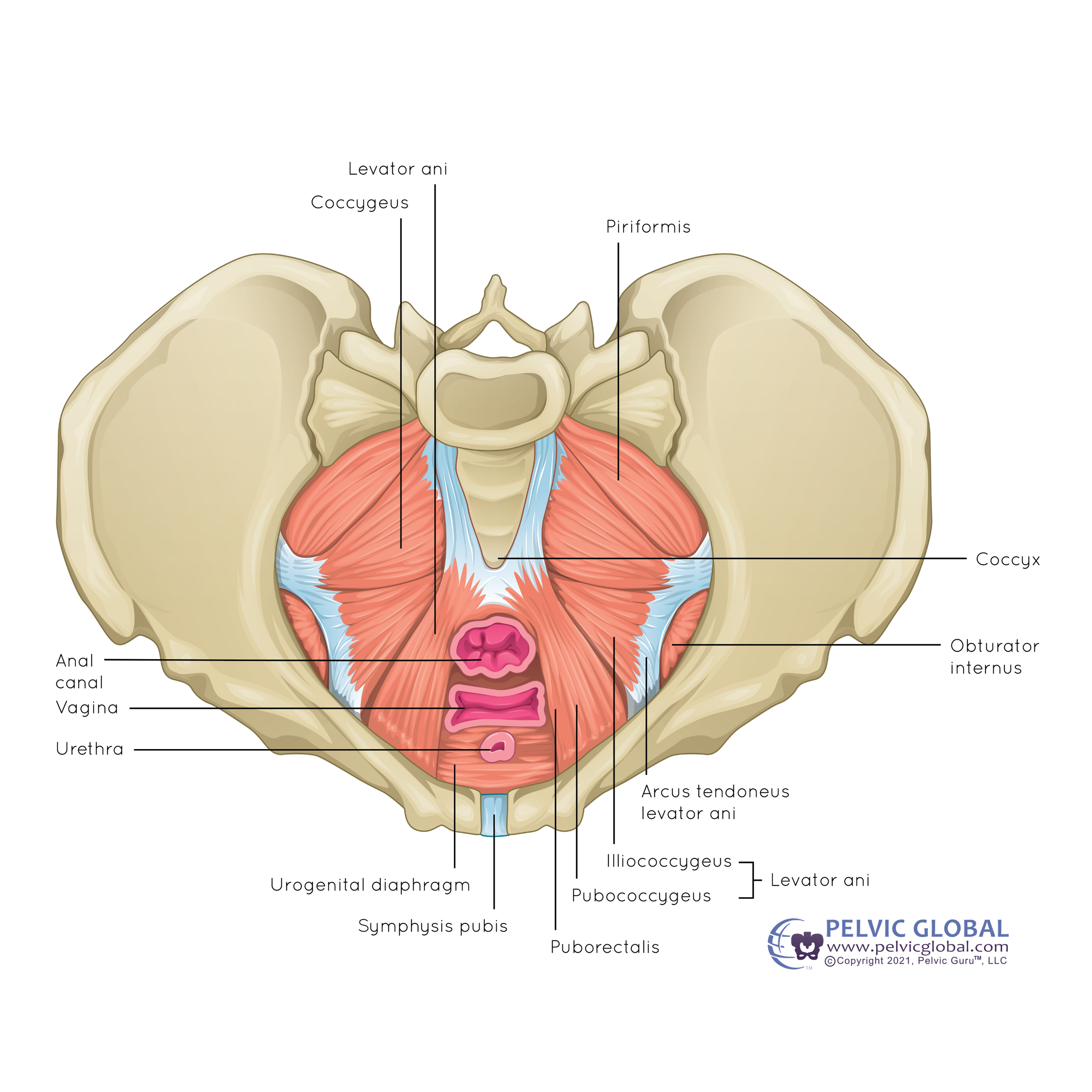Could Your Hip Pain Actually Be Pelvic Floor Dysfunction?
Do you suffer from hip tightness that doesn’t seem to go away, no matter how often you stretch? Have you seen a physical therapist, massage therapist, or chiropractor for hip pain and no amount of exercises, bodywork, or adjustments helped?
If these scenarios sound familiar, you might be surprised to learn that you could be dealing with a hidden pelvic floor issue. When it comes to stubborn hip pain and tightness, I often explain to my clients that sometimes their issue is coming from “from inside the house”, or in other words - their pelvic floor. In this blog post, we'll explore the hidden link between the hip and pelvic floor and discuss the benefits of pelvic floor physical therapy for treating hip problems.
How are the hips connected to the pelvic floor?
The hip is a very strong joint, located on both sides of the pelvis and functions not only to move your leg but also stabilize to your pelvis. The pelvic floor muscles are located inside your pelvis (between your pubic bone and tailbone) and play a role in core support, bladder function, bowel function, and sexual function. When the pelvic floor muscles are compromised in some way due to pain, injury, or hormonal changes, this can cause a range of symptoms. Some examples include urinary leakage, frequent urination, vaginal or rectal pain, pelvic organ prolapse, and constipation.
As you can see in the diagram above, both the pelvic floor and hip are very close in proximity to one another. In fact, they share some structures.
One shared structure is the obturator internus (OI). This muscle forms an integral part of the pelvic floor, working with other pelvic floor muscles to provide support and stability to the pelvic organs. Beyond the pelvic floor, the OI also supports hip joint dynamics. One of the main actions of the OI is to externally rotate your hip when the hip is extended, assisting in activities such as walking, standing, and maintaining balance. This muscle can easily be palpated with an internal examination, which is performed by a trained pelvic health physical therapist.
Another important structure is the iliopsoas, or hip flexor. This muscle extends from the lumbar spine to the pelvis and femur. When the hip flexors are tight it can cause tension on the pelvic floor. This is because the hip flexor is connected with the pelvic floor through connective tissue called fascia. Your fascia helps to keep everything in place but it also needs to be flexible to allow you to move. When the fascia of the hip flexor is tight, this can pull on the lower back and pelvis as well as change the orientation of the hip socket, which can alter your biomechanics, lead to orthopedic issues, and cause pelvic pain and organ support problems.
Given this close relationship between the hips and pelvic floor muscles, we know that issues that affect the hip can impact the pelvic floor, and vice versa. For example, in 2021 there was a study done that compared hip strength and pelvic floor strength among women with and without urinary urgency/frequency. Findings revealed that women with urinary urgency/frequency had more hip weakness compared to women without these symptoms. while there was no significant difference in pelvic floor strength between the two groups.
The bottom line: your pelvic floor doesn’t work in isolation to support your body. It works as a team with your hip muscles to support bowel, bladder, and sexual function. If there’s tightness, weakness, or pain in the hip joints or muscles, this could impact your pelvic floor’s function.
How do I know if my hip pain is coming from my pelvic floor?
Hip pain is often described as a "pinching," "tightness," or a “deep ache”. You might feel like your hips feel "stuck" when you move from sitting to standing. Or you might have trouble squatting, bending, or performing certain Yoga stretches due to sharp pain in your groin area. Many clients who see me for hip pain also disclose pelvic floor concerns after I ask them questions about her bowel, bladder, and sexual function; injury history; and lifestyle. A simple screening that I utilize in clinic is the Cozean Pelvic Dysfunction Screening Protocol.
If you have hip pain and check 3 or more boxes on this screening, there is a strong possibility that your hip pain is related to pelvic floor issues.
How can pelvic floor physical therapy help relieve hip pain?
A pelvic health PT can assess your pelvic floor, either externally or internally if you are seeing them in person, and help determine if your hip pain is truly being caused by issues in your pelvic floor muscles. They can also perform strength and mobility testing to determine which of your muscles might benefit from therapy.
Treatment typically involves a program of exercises to help strengthen muscles that are weak and stretches to mobilize muscles that are tight. Your therapist might also incorporate manual therapy techniques, such as soft tissue massage, myofascial release, or dry needling, to help reduce pain and increase flexibility. A PT might also recommend a device called a pelvic wand to help you perform internal pelvic floor release at home.
About the Author
Dr. Ariana Lopez, PT, DPT is a licensed physical therapist and the owner of Arlo Physical Therapy & Wellness, which serves the Minneapolis-Saint Paul community. She specializes in orthopedic and pelvic floor rehabilitation and has a special interest in working with performing artists and the perinatal population. Ariana offers in-person and telehealth physical therapy using a trauma-informed, person-first approach.
To schedule your first visit with me, click this link.
I can’t wait to work with you!







